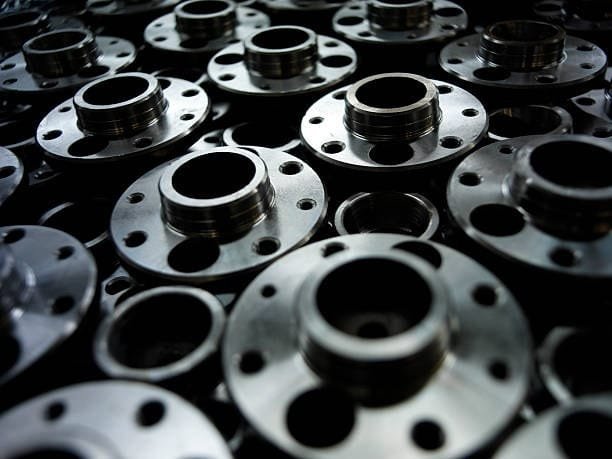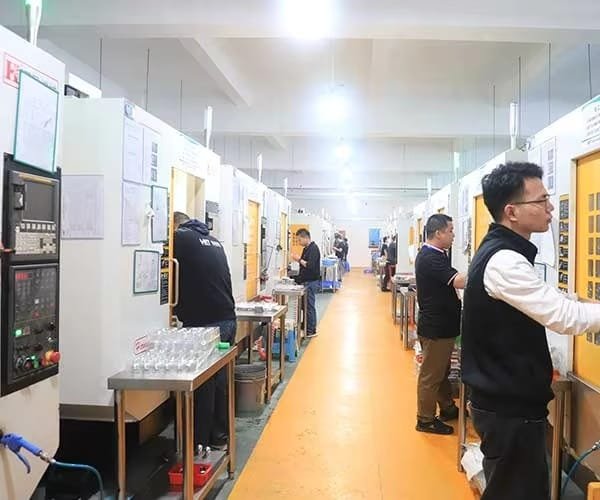From electronics to aerospace, tiny parts production is a critical industry with great impact on many others. Though they seem insignificant on their own, these minor components are often essential for the general running of more complicated systems. Manufacturing these parts requires advanced technologies, excellent accuracy, and quality control if one is to stay competitive and meet rising market needs. In this all-encompassing book, we will look at the intricate field of small parts manufacture, its technologies, materials, applications, and best practices.
Understanding Small Parts Manufacturing

Small parts manufacturing is the production of small components required for more extensive systems or tools. Often quite difficult, these parts require expert workers and specific instruments to assure correctness. Many industries rely on these specific components, hence producers of different types of parts must employ innovative technologies and adhere to high quality standards to deliver consistent products.
Key Industries Relying on Small Parts Manufacturing

Maintaining product functioning and performance rely in large parts on several sectors largely on tiny part manufacturing process. Among the most obvious sectors are these:
- Electronics
- Microchips, transistor, and circuit board connectors are extremely indispensable in consumer electronics, computers, and communication devices
- Precision is crucial in preventing system failures or electrical breakdown.
- Automotive
- Precision gears, sensors, and components of fuel injection systems are three key pieces utilized in cars
- Effective engine performance and safety factors depend on small components.
- Medical Devices
- Driving surgical equipment, implants, and diagnostic gadgets is precision manufacturing.
- These components have to meet rather stringent hygienic and durability standards.
- Aerospace
- Fasteners, brackets, and control system components are rather important in aircraft and spacecraft.
- These components satisfying safety criteria will help to avoid mechanical problems.
- Consumer Goods
- Watches, home appliances, and smartphones all run effortlessly using intricate parts.
Methods of Small Parts Manufacturing

The complexity of small part fabrication requires for numerous modern procedures guaranteeing accuracy and longevity to produce parts. Among the most regularly utilized methods in the field are these ones:
1. CNC Machining
- CNC (Computer Numerical Control) machining allows manufacturers to create complex geometries with rather near tolerances.
- Perfect for plastics, aluminum, and other materials is material adaptability.
- High volume consistent production assured by CNC equipment guarantees efficiency.
2. Injection Molding

- Ideal for minimal waste mass manufacture of plastic components, mass production capabilities let for.
- Design consistency is perfect for large production since it guarantees homogeneity in components.
3. 3D Printing (Additive Manufacturing)

- Rapid prototyping enables manufacturers to make prototypes quickly and test designs before mass production.
- Ideal for designing complex forms with minimum material waste is this method.
- Perfect for low volume custom orders and accurate little components is flexibility.
4. Stamping and Punching
- Designed for flat metal components including brackets, clamps, and washers, reasonably priced for large quantities.
- High speed guarantees fast manufacture for large orders.
5. Die Casting

- Often used for aluminum, zinc, and magnesium items with complex shapes is metal precision.
- creates durable, precisely dimension-based, long-lasting components.
6. Laser Cutting
- Designed for cutting intricate structures in metal, plastic, and ceramics, High Precision
- Minimum Material Waste helps to reduce scrap and guarantees proper details.
Materials Used in Small Parts Manufacturing

Choosing the suitable material will help to guarantee the lifetime, performance high strength, and durability of a component. Typical ingredients are:
- Plastics used in flexible and light-weight designs are ABS, polycarbonate, and nylon.
- For heat resistance and durability, used in electronics and medical equipment, ceramics
- Combine in composite materials lightweight features, strength, and adaptability.
- Control of Quality in Small Parts Production
Quality Control in Small Parts Manufacturing
The quality management process, system and control determines whether every produced good meets industry requirements and runs as intended. Good quality control procedures consist in:

- Accurate measurements of every component utilizing calipers, micrometers, and coordinate measuring machines (CMM) produce
- surface finish testing guarantees optimal surfaces, suitable coatings, and visual appeal.
- Material analysis assures the chemical composition, strength, and thermal properties of the used components.
- Functional testing ensures that the last product runs constantly under expected situations.
Challenges in Small Parts Manufacturing

Manufacturers face various challenges producing tiny components even with technical advancements:
- Little differences could lead to malfunction or defective products in precision maintenance.
- Two ongoing challenges in material waste management are cutting additional scrap and lowering raw material prices.
- Maintaining uniformity as one moves from small-batch to mass manufacturing can prove challenging.
- Tools wear down faster and requires regular maintenance or replacement because of their needed accuracy.
Best Practices in Small Parts Manufacturing
Following these best standards helps consumers and producers to maximize their operations:
- Since robotic systems improve accuracy and efficiency, therefore reducing errors in challenging assemblies, invest in automation.
- Advanced software speeds manufacturing and design by using CAD (Computer-Aided Design) and CAM (Computer-Aided Manufacturing).
- Strong testing ensures that every good meets customer expectations.
- Since choosing premium materials lowers defects and enhances product performance, material choice should be given first attention.
- Given excellent production standards depend on trained operators, give workforce training first importance.
Major Types of Micromachining

Mechanical micromachining and non-mechanical micromachining are the two main forms of micromachining distinguished by the techniques of material shaping. Every technique uses different approaches meant to reach the highest standards of accuracy in small-scale production.
Mechanical Micromachining Techniques
Two basic forms of micromachining distinguished by the methods of material shaping are mechanical micromachining and non-mechanical micromachinking. Every small component machining process and technique employs several techniques aimed to accomplish accuracy in small-scale production.
1. Milling
- A milling machine spins a cutting tool to mold a stationary object.
- Ideal for manufacturing optical components, electronic circuitry, and microfluidic devices, optical components and electronic circuitry
2. Turning
- Under the removal of material by a stationary tool, the workpiece spins in CNC turning.
- Usage: Mostly used for small cylindrical items like shafts and pins.
3. Drilling
- Method: This approach uses a drill bit to produce precisely holes in a workpiece.
- Commonly applied in the production of electronics and medical instruments is this technology.
4. Grinding
- A grinding wheel removes material to generate a smooth, clean, exact surface finish.
- Perfect for reaching tight tolerances and polished surfaces is application carbon steel.
Non-Mechanical Micromachining Techniques
Non-mechanical micromachining methods shape materials using energy sources ranging from chemical reactions to lasers to electrical currents stainless steel. Important techniques consist common materials used in:
1. Electrochemical Machining (ECM)
- ECM splits substance in a chemical bath under an electric current competitive price.
- Applications: Perfect for designing complicated constructions in hard or conductive materials remain competitive.
2. Electrical Discharge Machining (EDM)
- EDM eliminates material using controlled electrical discharges.
- Designed for generating complex geometries in strong or conductive materials, these tools
3. Micro-Abrasive Jet Machining
- The workpiece is formed with fine abrasive particles driven at very fast speed machining services.
- Perfect for sensitive materials and highly aspect ratio building is their application just a few examples.
4. Laser Machining
- The workpiece is formed by laser beams either melting or vaporizing material.
- Mostly found in MEMS devices, microelectronics, and medical implant manufacture is manufacturing.
5. Ion Beam Machining
- Ion beams point at the workpiece to exactly remove materials.
- Applications: Common in both sensitive component and semiconductor fabrication are their uses.
6. Plasma Etching
- Material is efficiently removed from the workpiece with a plasma beam cnc milling.
- Mostly used in the electronics industry for etching micro-scale details, these tools
Mechanical and non-mechanical micromachining techniques—which ensure the creation of small-scale, highly accurate complicated, tiny components—determine much of precision in manufacturing.
Future Trends in Small Parts Manufacturing
The industry is a competitive business with price always changing since new trends affect production methods quality management system. Notable advances include:
- Applied to anticipate equipment maintenance, maximize manufacturing, and early defect detection machining techniques, artificial intelligence and machine learning help to maximize AI and Machine Learning
- Emphasizing waste reduction, environmentally acceptable products, and energy efficiency improvement helps to sustain sustainability practices machining parameters.
- Advanced robotics promises speedier manufacturing without compromising quality by way of improved automation.
- By means of nanotechnology, ultra-small components for creative purposes in electronics, aircraft, medicine, and electronics can be produced.
Conclusion
Small part manufacture is a critical industry needing accuracy, efficiency, and imagination. Using modern technologies, using design specifications providing rigorous quality control precision machined, and supporting sustainable practices helps manufacturers to produce premium components and services that meet industrial needs. From electronics to aviation, tiny parts manufacturing maintains impacting current innovations and improving product dependability.

